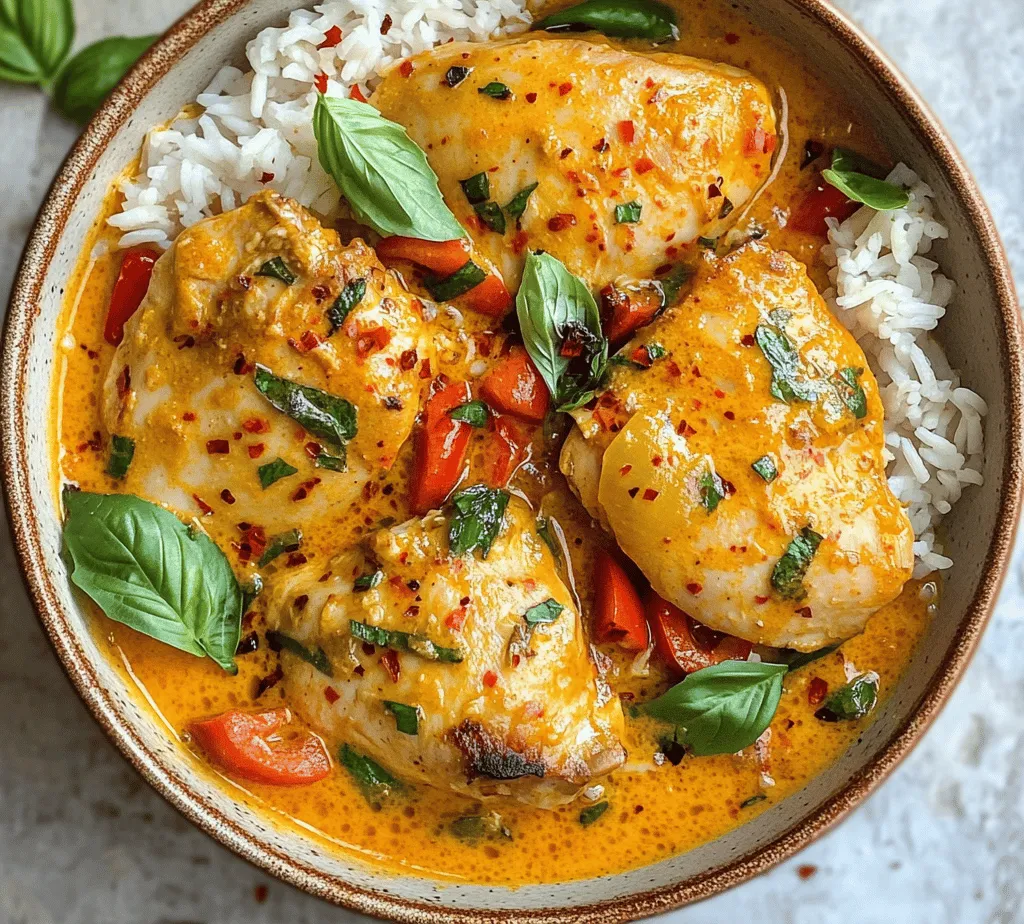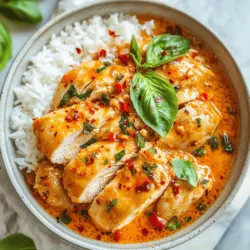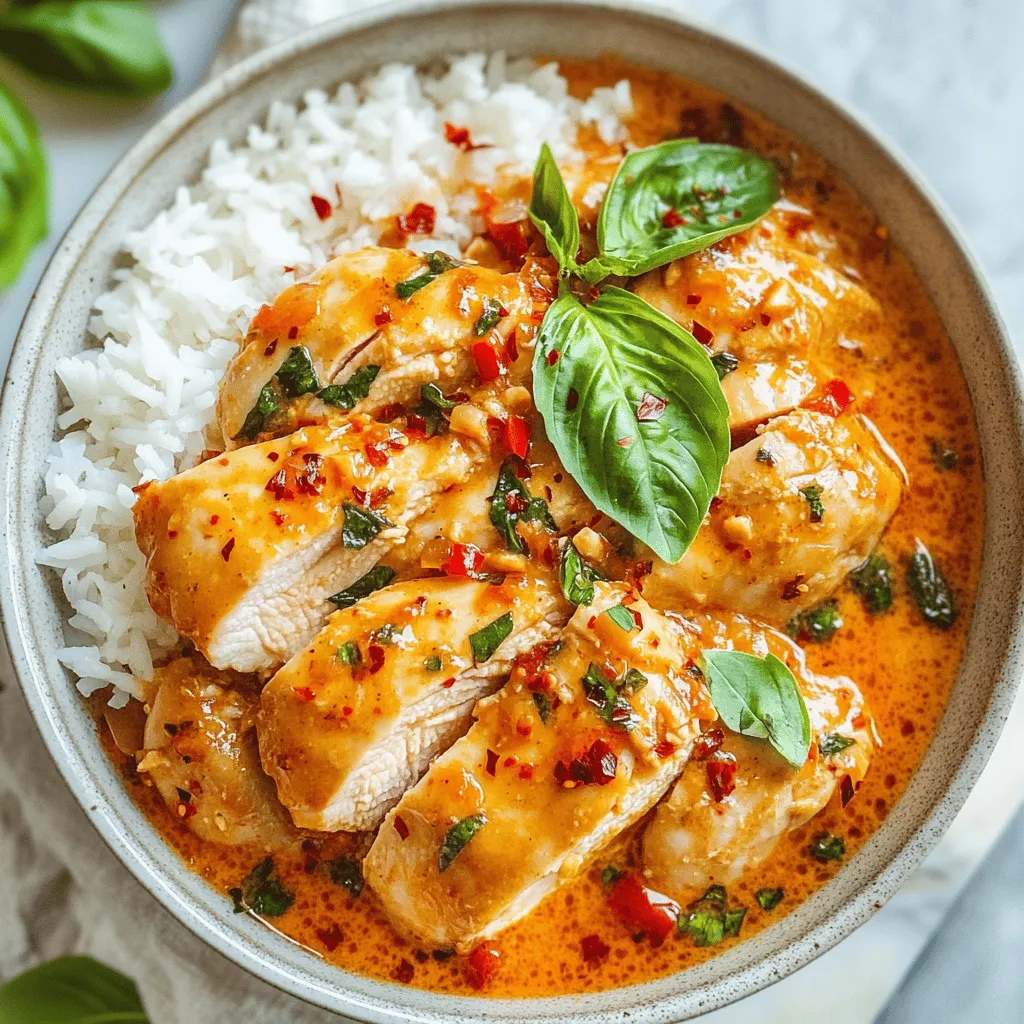Introduction
Thai cuisine has captivated the hearts and taste buds of food lovers around the globe, renowned for its vibrant flavors, aromatic spices, and fresh ingredients. From the bustling street food stalls of Bangkok to elegant fine dining establishments, Thai dishes offer an explosion of taste that is both exhilarating and comforting. One such dish that stands out among the rich array of Thai offerings is Panang curry. This delightful dish is not just a meal; it’s a culinary experience that reflects the essence of Thai cooking.
Panang curry, with its rich and creamy texture, combines the bold flavors of spices and herbs, resulting in a dish that is as satisfying as it is aromatic. Unlike other Thai curries, Panang curry is characterized by its thick consistency and slightly sweet flavor profile, making it distinct and beloved by many. The harmonious balance of heat, sweetness, and savory notes creates a flavor explosion that is simply irresistible.
When it comes to preparing an authentic Thai Chicken Panang Curry, the importance of using fresh, high-quality ingredients cannot be overstated. Fresh ingredients not only enhance the flavor but also contribute to the overall authenticity of the dish. In this article, you can expect a step-by-step guide to crafting the best Thai Chicken Panang Curry at home, with tips and tricks to elevate your culinary skills.
Understanding Panang Curry
Panang curry has its roots deeply embedded in Thai culture and culinary tradition. The name “Panang” is derived from the Malay word “penang,” referring to the state of Penang in Malaysia. It is believed that this curry was influenced by both Thai and Malay cooking styles, resulting in a unique dish that showcases the best of both worlds. Over the years, it has evolved into one of the most popular curries in Thailand, often enjoyed with jasmine rice or rice noodles.
What sets Panang curry apart from other Thai curries, such as green curry and red curry, is its distinctive flavor profile and texture. While green curry is known for its spiciness and fresh herbal notes, and red curry offers a more robust and fiery flavor, Panang curry strikes a balance between sweetness and richness. The use of coconut milk creates a creamy consistency, while the incorporation of aromatic spices and herbs adds depth to the dish.
Key ingredients play a crucial role in defining the flavors of Panang curry. The base of the dish typically includes Panang curry paste, which is made from a blend of red chilies, lemongrass, kaffir lime leaves, galangal, and other spices. This paste gives the curry its characteristic heat and complexity. Additionally, the dish is often enhanced with the sweetness of palm sugar, the umami depth of fish sauce, and the freshness of herbs like basil and kaffir lime leaves.
Ingredient Breakdown
To create the best Thai Chicken Panang Curry, gathering the right ingredients is essential. Here’s a breakdown of the key components you’ll need to ensure a flavor-packed dish.
Boneless, Skinless Chicken Thighs
When it comes to chicken, boneless, skinless thighs are preferred for this recipe. Chicken thighs are more tender and juicy compared to chicken breasts, making them ideal for absorbing the rich flavors of the curry. Their higher fat content also adds to the overall creaminess of the dish, creating a succulent texture that complements the curry sauce beautifully.
Panang Curry Paste
Panang curry paste is the heart of this dish, providing the foundational flavors that define its character. You can find this paste in Asian grocery stores or online, but it’s crucial to choose a high-quality option. Look for authentic brands that list fresh ingredients without preservatives. If you’re feeling adventurous, you can even make your own Panang curry paste by blending red chilies, lemongrass, kaffir lime leaves, and other spices in a food processor.
Coconut Milk
Coconut milk is essential for achieving the creamy texture that Panang curry is known for. Opt for full-fat coconut milk for the best results, as it provides a rich and velvety mouthfeel. The creaminess of the coconut milk balances the heat from the curry paste, creating a harmonious flavor profile. Be sure to shake the can well before using, as the cream may separate.
Fish Sauce
Fish sauce is a staple ingredient in Thai cooking, contributing a deep umami flavor that elevates the dish. It adds a savory note that complements the sweetness of the palm sugar and the creaminess of the coconut milk. A little goes a long way, so start with a small amount and adjust to taste.
Palm Sugar vs. Brown Sugar
While palm sugar is the traditional sweetener used in Thai cuisine, brown sugar can be used as a substitute if necessary. Palm sugar has a unique flavor that is slightly caramel-like and less processed than brown sugar. It dissolves easily in the curry, allowing for a balanced sweetness that enhances the overall flavor. If you’re using brown sugar, aim for a light variety to replicate the taste more closely.
Fresh Vegetables
Incorporating fresh vegetables not only adds vibrant color to your Panang curry but also enhances its nutritional value. Common vegetables used in this dish include bell peppers, carrots, and snap peas. Their crisp texture and natural sweetness complement the rich curry sauce, creating a delightful contrast.
Fresh Herbs
Fresh herbs are crucial in Thai cooking, and for Panang curry, basil and kaffir lime leaves play a pivotal role. Thai basil adds a peppery flavor that brightens the dish, while kaffir lime leaves contribute a citrusy aroma that elevates the overall taste. Adding these herbs towards the end of the cooking process ensures that their flavors remain fresh and potent.
Optional Ingredients
To enhance your Panang curry further, consider adding a splash of lime juice for acidity and brightness. Lime juice can balance the richness of the coconut milk and add a refreshing element to the dish. Additionally, chili flakes can be included for those who prefer an extra kick of heat.
Preparation Steps Explained
To begin your culinary adventure, it’s essential to prepare the aromatics that form the foundation of your Panang curry. Here’s how to maximize the flavors in this dish:
1. Mise en Place: Before you start cooking, gather and prepare all your ingredients. Chop the chicken thighs into bite-sized pieces, slice your vegetables, and measure out your sauces and spices. Having everything ready will make the cooking process smoother and more enjoyable.
2. Prepare the Aromatics: Start by finely chopping the aromatics, which typically include garlic, shallots, and ginger. These ingredients release their essential oils when sautéed, infusing the oil with incredible flavor. Heat a tablespoon of vegetable oil in a large pan or wok over medium heat, then add the chopped aromatics. Sauté until fragrant, being careful not to burn them.
3. Add the Panang Curry Paste: Once the aromatics are softened and fragrant, stir in the Panang curry paste. Cook this mixture for a few minutes, allowing the paste to release its flavors. This step is crucial, as it helps to bloom the spices in the paste, enhancing the overall taste of the curry.
4. Incorporate the Chicken: Next, add the chicken thighs to the pan. Stir well to coat the chicken pieces with the aromatic mixture and curry paste. Cook until the chicken is no longer pink, about 5-7 minutes.
5. Pour in the Coconut Milk: Once the chicken is cooked through, it’s time to add the full-fat coconut milk. Pour it into the pan, stirring to combine. The creamy richness of the coconut milk will create the luscious sauce that makes Panang curry so irresistible.
As you embark on preparing this delightful dish, remember that the key to an exceptional Thai Chicken Panang Curry lies in the quality of your ingredients and the care you take in cooking them. Stay tuned for the continuation of this article, where we’ll delve deeper into cooking techniques, tips for achieving the perfect curry, and much more deliciousness that awaits you in this culinary journey.

Cooking the Chicken: Tips for Achieving the Perfect Texture
When making the best Thai Chicken Panang Curry, the texture of the chicken is crucial for a delightful dining experience. Start by selecting high-quality chicken thighs, which are preferred for their tenderness and flavor. Cut the chicken into bite-sized pieces, ensuring they are uniform in size for even cooking.
Marination is Key: Consider marinating the chicken for at least 30 minutes with a mix of soy sauce, lime juice, and a touch of brown sugar. This not only infuses flavor but also tenderizes the meat.
Cooking Method: Use a heavy-bottomed skillet or wok to sear the chicken. Heat a tablespoon of oil over medium-high heat, then add the chicken pieces in a single layer, avoiding overcrowding. Sear for about 3-4 minutes on each side until golden brown. This method locks in moisture and enhances the overall flavor. Once browned, remove the chicken from the pan and set it aside while you prepare the curry sauce.
Incorporating Coconut Milk: How to Achieve the Right Consistency
Coconut milk is a hallmark of Thai cuisine, lending creaminess and natural sweetness to Panang curry. When incorporating coconut milk, it’s essential to achieve the right consistency for the sauce.
Choosing the Right Coconut Milk: Opt for full-fat coconut milk for a richer, creamier sauce. If you prefer a lighter version, you can mix full-fat with light coconut milk.
Technique: After sautéing your aromatics and curry paste in the pan, pour in the coconut milk gradually. Stir it in gently to combine with the spices and aromatics. Allow the coconut milk to simmer gently; this helps the flavors meld beautifully. If the curry is too thick, you can adjust the consistency by adding a little chicken broth or water until it reaches your desired thickness. Simmering for about 10-15 minutes will help the flavors develop while keeping the sauce velvety smooth.
Seasoning the Curry: Balancing Flavors for the Perfect Taste
A well-seasoned Panang curry strikes a delicate balance between sweet, savory, and spicy flavors. Start with your prepared chicken and coconut milk base, then enhance it with additional seasonings.
Essential Seasonings: Incorporate fish sauce for umami depth, brown sugar for sweetness, and tamarind paste for a tangy kick. Adjust these ingredients gradually, tasting as you go to maintain the flavor balance.
Fresh Herbs and Spices: To elevate your curry, add fresh kaffir lime leaves, Thai basil, and a squeeze of lime juice just before serving. These ingredients brighten the flavors and add aromatic freshness that defines authentic Thai cuisine.
Incorporating Vegetables: Timing and Techniques for Optimal Texture
Vegetables not only add nutrition but also color and texture to your Panang curry. Common choices include bell peppers, bamboo shoots, and green beans.
Prepping Vegetables: Cut the vegetables into uniform pieces to ensure even cooking. Softer vegetables like bell peppers should be added later in the cooking process to retain their crunch, while firmer vegetables like carrots should be added earlier.
Timing is Everything: Add the firmer vegetables (like carrots and green beans) when you first introduce the coconut milk, allowing them to cook and soften. After about 10 minutes, add the softer vegetables, stirring them in gently. This method ensures that all vegetables reach the perfect texture without becoming mushy.
Finishing Touches: The Importance of Fresh Herbs and Resting Time
The final step in crafting your Thai Chicken Panang Curry is adding fresh herbs and allowing the dish to rest.
Herbs: Fresh Thai basil and cilantro not only enhance the aroma but also provide a vibrant finish. Just before serving, sprinkle these herbs over the curry for a pop of color and flavor.
Resting Time: Allowing the curry to sit for 5-10 minutes before serving lets the flavors meld. This brief resting period enhances the overall taste and ensures your dish is perfectly seasoned throughout.
Serving Suggestions
Pairing Panang Curry with Jasmine Rice: Why It’s the Ideal Choice
Panang curry is best served with fragrant jasmine rice, which complements the rich sauce beautifully. The slightly sticky texture of jasmine rice acts as a perfect vehicle for soaking up the curry, enhancing the overall experience. To prepare jasmine rice, rinse it under cold water to remove excess starch, then cook it with a ratio of 1:1.5 rice to water for fluffy results.
Alternative Side Dishes That Complement the Curry
While jasmine rice is the classic pairing, you can also serve Panang curry with other sides. Consider these alternatives:
- Sticky Rice: For a traditional touch, serve sticky rice, which is particularly popular in Northern Thailand.
- Rice Noodles: For a different texture, rice noodles can be an excellent base for the curry.
- Asian Greens: A side of sautéed bok choy or steamed broccoli can add a nutritious crunch.
Presentation Tips to Enhance the Dining Experience
To elevate the visual appeal of your Panang curry, consider these presentation tips:
- Use a large bowl to serve the curry, allowing the vibrant colors of the dish to stand out.
- Garnish with freshly chopped herbs and thinly sliced red chili for a pop of color.
- Serve with a side of lime wedges to encourage guests to add a squeeze of lime for added brightness.
Nutritional Benefits of Panang Curry
Overview of Nutritional Content in the Main Ingredients
The primary components of Panang curry—chicken, coconut milk, and vegetables—offer a range of nutritional benefits. Chicken thighs provide protein and essential amino acids, while coconut milk contributes healthy fats and energy.
Health Benefits of Coconut Milk and Chicken Thighs
Coconut milk is rich in medium-chain triglycerides (MCTs), which can boost metabolism and provide quick energy. It also contains lauric acid, known for its antimicrobial properties. Chicken thighs, on the other hand, are not only flavorful but also packed with vitamins and minerals, including B vitamins and zinc.
Discussion on Incorporating Vegetables into Meals for Balanced Nutrition
Adding various vegetables to your Panang curry not only enhances flavor but also boosts nutritional value. Vegetables provide essential vitamins, minerals, and dietary fiber, which are vital for overall health. By incorporating a rainbow of vegetables, you ensure a broad spectrum of nutrients in your meal.
Considerations for Customizing the Recipe for Dietary Preferences (e.g., Vegetarian Options)
For those following a vegetarian or vegan diet, Panang curry can easily be adapted. Substitute chicken with tofu or tempeh, which can absorb the curry’s flavors well. Additionally, use vegetable broth instead of chicken broth and opt for a plant-based fish sauce or soy sauce for seasoning.
Cultural Significance of Thai Food
The Role of Food in Thai Culture and Community Gatherings
Thai cuisine is deeply intertwined with the culture and traditions of the country. Food is often seen as a way to bring people together, whether in celebration, during festivals, or as part of everyday life.
How Dishes Like Panang Curry Reflect Thai Traditions and Hospitality
Dishes such as Panang curry exemplify the balance of flavors that Thai cuisine is known for—sweet, spicy, sour, and salty. These elements reflect the country’s agricultural richness and the Thai people’s hospitality, where sharing food is an essential aspect of social interactions.
Importance of Sharing Meals and the Communal Aspect of Dining in Thailand
In Thailand, meals are typically shared among family and friends, reinforcing bonds and community spirit. The act of sharing food is a gesture of love and friendship, making dishes like Panang curry even more special when enjoyed together.
Conclusion
The delightful flavors and aromas of Thai Chicken Panang Curry are a testament to the rich culinary heritage of Thailand. This dish not only showcases the balance of spices and textures but also embodies the communal spirit of Thai dining. By exploring and appreciating the nuances of Thai cuisine, you can elevate your culinary skills and create memorable meals.
Cooking with fresh, quality ingredients is essential for an authentic experience, allowing you to savor the true essence of Thai flavors. Whether you are new to cooking or a seasoned chef, this recipe invites you to embrace the vibrant world of Thai cuisine, creating dishes that nourish both body and soul. Give it a try and enjoy the fragrant journey that comes with each bite.


